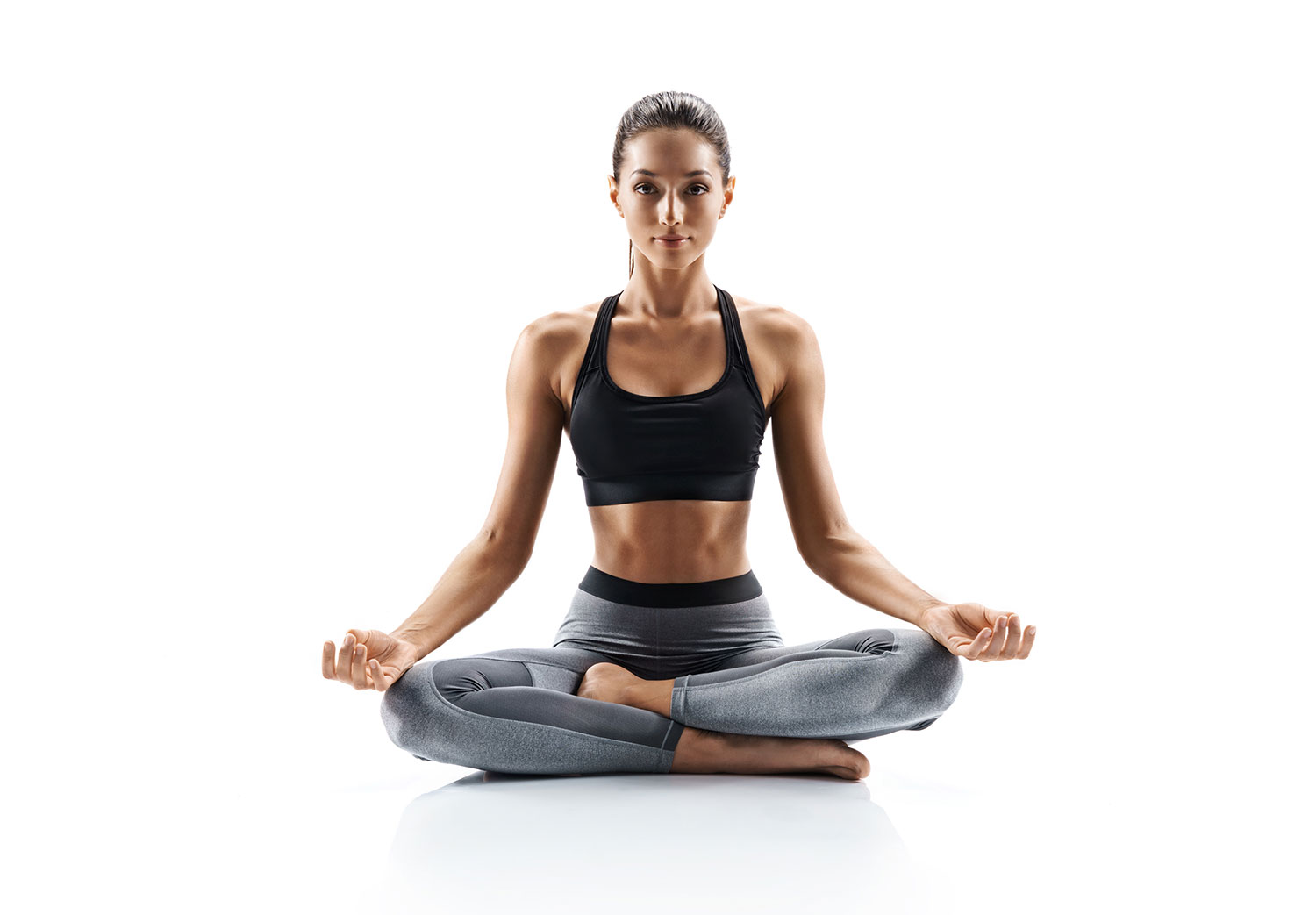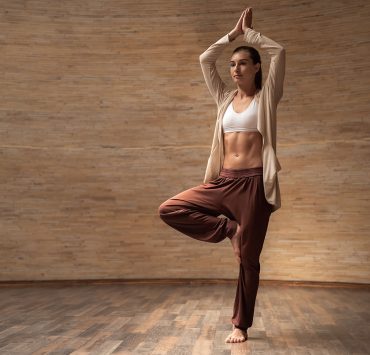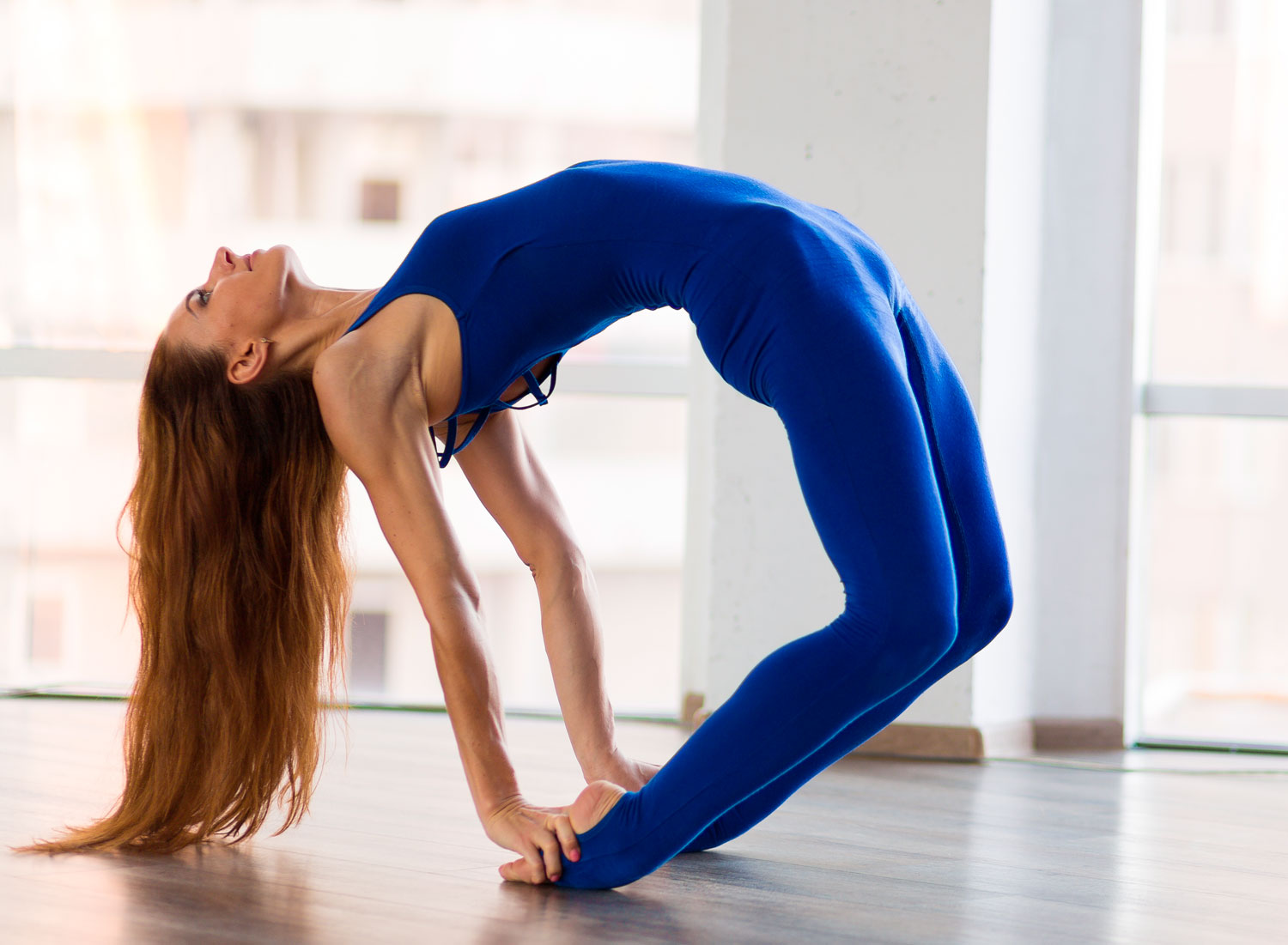
A graduate of Arizona State University, Nicole Baker is a…
The imagery behind the lotus flower is compelling: from the mud and decay that exists at the bottom of a pond, a lotus seed finds its home. Nestled in challenging conditions, it begins to grow upward through fractionated light. Once it reaches the top of the water, its journey of the challenge isn’t over. Its flower stays above the pond, staying perfectly balanced while keeping its petals from touching the water.
The lotus flower has links to imagery in yoga and meditation as well as Hinduism and Buddhism. In Hinduism, Vishnu is one of the most important gods. He is the Preserver and Guardian of Men and he protects the order of things. The book, Myths of the Asanas, outlines the power of the lotus flower. One day while Vishnu was floating on the thousand-headed serpent Anata, a lotus flower grew from his navel revealing the face of Brahma, the god of Creation. After the four parts of the sacred sound of OM was revealed, the sound created the universe as we know it today. In ancient text, it is said that lotus posture destroys all diseases and awakens kundalini. Lotus petals are prevalent on all seven chakras.
In Buddhism, there is a legend that everywhere the baby Buddha stepped, a lotus flower grew. It represents the enlightened midst arising out of suffering.
Lotus pose (padmasana) is one of the postures that the media tends to associate with yoga and meditation. It is a grounding posture and according to some, if you fall asleep in the posture during meditation you won’t fell over!
Benefits of Lotus Pose

When practiced with correct alignment padmasana has the following benefits to the practitioner.
— It calms the mind
— Possible stimulation of the pelvis, spine, bladder, and abdomen
— Stretches the knees and ankles
— May provide ease for menstrual cycle discomfort and sciatica
When incorporated into the third trimester in a prenatal practice may help some women with labor
Contraindications

While there are benefits to those who can practice lotus pose with correct alignment, there are actually quite a few contraindications, with a large population of people who may never be able to practice it. Renowned Yin Yoga teacher, Bernie Clark, outlines the main reason why– bone structure. Even if we work on external rotation in the soft tissues, the neck of the femur can create compression when it comes into contact with the rim of the hip socket. Depending on the individual’s structure trying to force our body against the bones is simply not helpful, it could even be harmful. Other contraindications include ankle and knee injuries. While it is one of the most quintessential postures in magazines and social media, it is an advanced practice and is not often suitable for beginners.
Preparatory Postures

Before practicing lotus pose, it is vital to open up the hips. The following postures can be practiced beforehand to help ease into the posture. While these are meant to be done before lotus pose in the same practice, they can also be practiced many sessions beforehand to help bring padmasana into your practice at a later date.
Sukhasana — Easy Seated Pose

While it is a great preparatory posture, easy seated pose (sukhasana) is a good indicator to see if you are ready for lotus pose or not. If easy seated pose already feels difficult on the knees or hips, incorporate it into your daily practice until it is less challenging before even attempting lotus pose.
To practice, root the sits bones into the floor. Let the ankles cross and allow the spine to lengthen as the crown of the head lifts towards the sky. The belly is engaged and the pelvis is neutral. Breathe and see if the knees can eventually lower a little closer to the floor. Hold for several breaths and repeat by reversing which ankle is on top.
Baddha Konasana — Cobbler’s Pose

Like sukhasana, cobbler’s pose is not only a great preparatory posture for lotus pose but it’s also a good indicator to see if you are ready for lotus pose or not. If cobbler’s pose, sometimes referred to as butterfly pose, is already causing your hips to scream start with some of the basic postures prior to incorporating lotus into your practice.
To start, come into staff pose. Bring the knees towards you while keeping the soles of the feet pressed into the earth. Breath in and on the out-breath, let the soles of your touch. Allow your heels to come as close as they can towards the pelvis without feeling pressure or pain in your knees. Press the outer edges of your feet firmly into the floor and wrap your hands around your feet or ankles. With the pelvis in a neutral position, let the knees to gently release downward, avoid forcing them down or placing pressure on them. There is no need to flap the knees, simply hold for ten or 15 breaths allowing the body to soften.
Virasana — Hero Pose

Hero’s pose helps prep the body for lotus because it not only stretches the thighs and knee area but it also the ankles, another major requirement of the posture.
Begin by kneeling on the floor with the knees together (a blanket can be placed underneath the knees if you need more support) and a little wider than hip-distance apart. The thighs are perpendicular to the floor, the tailbone is lengthening towards the ground while the crown of the head is lifting up. Sit down between the feet. If the buttocks cannot reach the floor, place support such as a block or a cushion underneath it.
Ardha Matsyendrasana — Half Lord of the Fishes Pose

Also known as ardha matsyendrasana, half lord of the fishes helps stretch the hips and energize the spine.
Start by sitting on the floor with your legs straight out in front of you. Bend your knees and place the soles of the feet on the floor. Slide your left foot under your right leg towards the outside of your right hip. Reach the right foot over the left leg and press the bottom of it onto the floor outside your left hip. The right knee will point directly up towards the sky. Take a deep breath in, on the exhale twist toward the direction of the right thigh. Press the right hand onto the floor just behind your right buttock, and set your left upper arm on the outside of your right thigh near the knee. Hug your front torso and inner right thigh snugly together. Hold her for five to ten breaths before repeating on the opposite side.
Janu Sirsasana — Head to Knee Pose

Head to knee pose, also known as janu sirsasana, helps stretch the hamstrings and open the hips. As you practice the posture, you will notice that some of the starting movements are very similar to lotus pose.
Come into staff pose and bend the right knee. Placing the foot against your left thigh, bring it as close as you can towards the pelvic area. Allow the outside of the right knee to release downwards toward the righthand side of the floor. With a neutral spine, bend over the left leg reaching for the left shin or foot. Avoid collapsing the shoulders. Practice for five to ten breaths and then repeat on the opposite side for an equal amount of time.
How Practice Lotus Pose

Once you have determined that your body is ready to practice lotus pose, either after prepping the body for a particular session or working for months or even years to feel safe, start in easy seated pose. Before moving, settle into the breath. Engaging in Ujjayi pranayama beforehand can help you to tune into your body, thoughts, and emotions. By noticing what is present, it can help guide your practice to see how quickly or slowly you want to practice the posture or if it wise to practice at all. Spend some time in easy seated pose, practicing your breathing, and proceed when and if the body is ready. If you haven’t already, complete the preparatory postures and warm-ups to make sure the body is physically ready. It could also be a good time to imagine the lotus flower, firmly grounded in the mud growing towards the sun regardless of the conditions around it.
Come into staff pose (dandasana). Move the feet out wider until they are slightly farther apart than the hips. If your pelvis started tipping forward or backward, return it to a neutral position. Externally rotate the right leg and bend the knee. Bring the right foot towards the inside of the left thigh so the sole of the right foot is touching it.
While keeping the foot gently flexed, slowly lift the right foot so it is stacked on top of the left thigh. Keeping the foot flexed will help the right ankle from hyperextending.
Once the right foot is placed and steady, complete the same action on the left side. Externally rotate the leg and slowly place the left foot with a soft flex in the ankle on the right thigh.
After the legs are positioned, revisit the upper body. Lift the crown of the head towards the sky, maintain a neutral pelvis, elongate the spine, and keep an open chest. After holding for a few breaths, make sure you spend an equal amount of time on the “other side”. Instead of starting with the right foot, start with the left foot and then lift the right foot. While it looks similar the opposite ankle on tops changes the intensity of the stretch.
While practicing, if you notice any pain anywhere in the body- STOP. Either the body isn’t ready, you need a modification, or this posture may not be appropriate to practice.
Variations and Modifications

Half Lotus

If full lotus is too challenging, its half version is still a challenging posture. Known as arha padmasana it is an excellent posture to practice when you feel like you might get to lotus one day, just not today. Like its full expression counterpart, it helps stretch the muscles around the ankles, pelvis, and legs. It also has the potential to help stretch the piriformis and promotes good posture.
To practice half-lotus, you would start the same way as full lotus. However, after stacking the right ankle on top of the left thigh, you would simply bend the left knee and let the shin rest on the floor in a cross-legged position. Like its full counterpart, practice on both sides for the same amount of time to create harmony in the body.
Use Blocks

By sitting on top of blocks, you help lift the hips above the knees making it easier to get into the posture. Sitting on top of blocks can work for either full or half lotus.
Use Blankets

If blocks make it a little too easy, sitting on top of one or two folded blankets creates some lift to make the posture more accessible.
Counterposes

When practicing this intense hip opener be sure to move out of the posture slowly. After the legs have practiced an intense amount of external rotation, postures that have internal rotation can feel great in the body and support a balanced practice. Postures to consider are:
— Windshield Wipers
— Knee Knock Pose
— Hero Pose
— Downward Facing Dog
Conclusion
Lotus pose is a deceptively challenging posture that is useful in asana and meditation. While it may not always be accessible to everyone at all times, there are many preparatory postures that can help get some of the many benefits of the posture while working towards it.
What's Your Reaction?
A graduate of Arizona State University, Nicole Baker is a force to be reckoned with in the realm of health and wellness. She studied behavioral health, which propelled her desire to live holistically and share her knowledge with other like-minded individuals.














